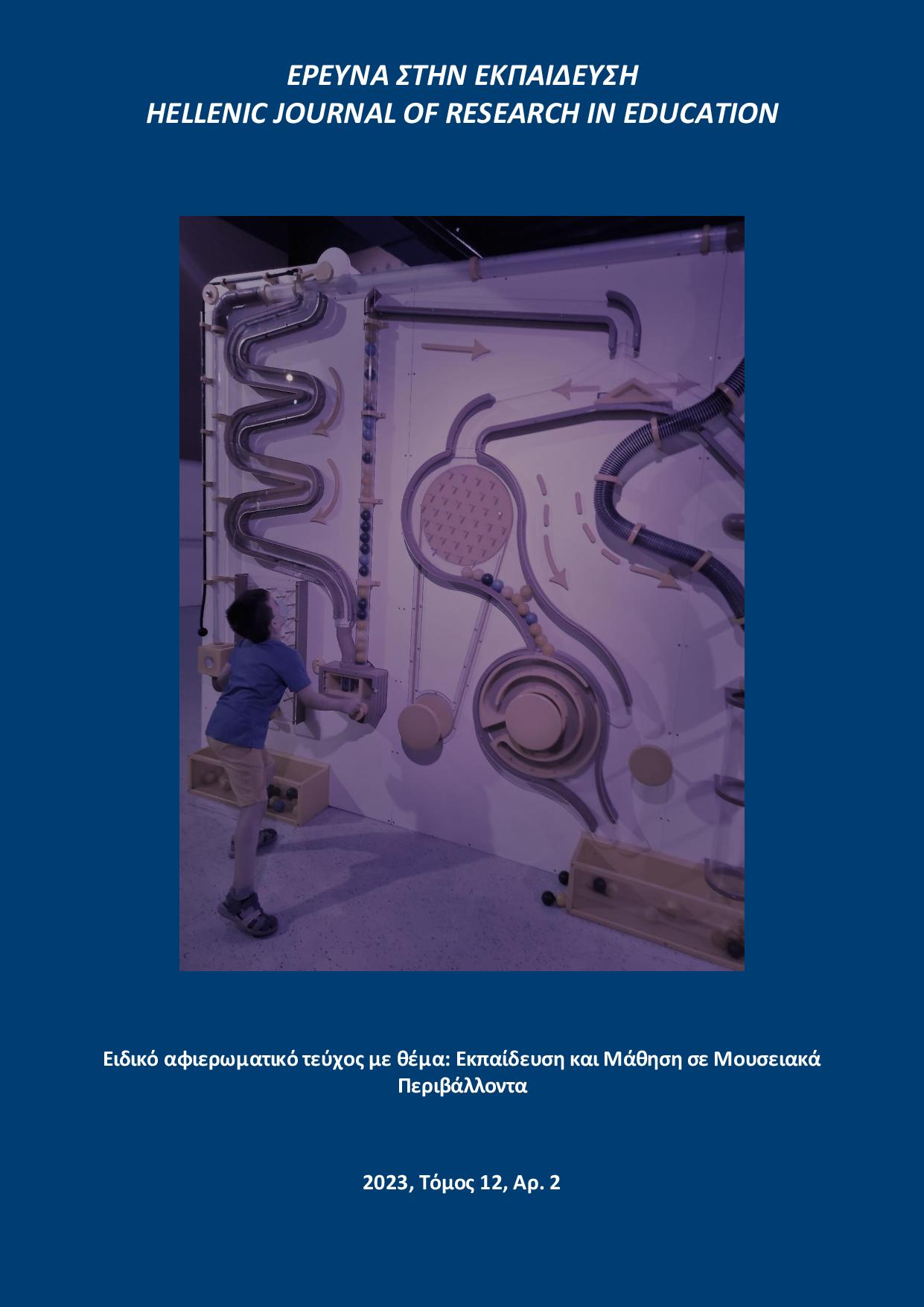Συζητώντας για το παρελθόν: διαλογικές ψηφιακές εμπειρίες στην εκπαίδευση της ιστορίας

Περίληψη
Η κοινωνική αλληλεπίδραση είναι παρούσα σε πολλές πτυχές της καθημερινότητας μας, ιδιαίτερα δε στον τομέα της εκπαίδευσης. Όπως δείχνουν οι έρευνες επηρεάζει θετικά τη μάθηση σε μουσειακό περιβάλλον, ενώ ο διάλογος, ως μια συνηθισμένη μορφή κοινωνικής αλληλεπίδρασης, αποτελεί αναπόσπαστο μέρος της συνεργατικής μάθησης, ειδικότερα στο πλαίσιο της εκπαίδευσης της Ιστορίας. Στο άρθρο αυτό εξετάζουμε τη χρήση συνεργατικών και διαλογικών εμπειριών σε χώρους πολιτισμού, παρουσιάζοντας δύο εμπειρίες που δημιουργήθηκαν για τον αρχαιολογικό χώρο της Αρχαίας Αγοράς της Αθήνας. Η πρώτη είναι μια δραστηριότητα συνεργατικής διαδραστικής ψηφιακής αφήγησης (storytelling) που αφορά τον χώρο της Αγοράς, στο πλαίσιο της οποίας οι χρήστες συζητούν στα σημεία επιλογών και παίρνουν αποφάσεις από κοινού. Η δεύτερη είναι μια συζήτηση με chatbot, το οποίο λειτουργεί ως διαμεσολαβητής, οδηγώντας τους συμμετέχοντες σε διάλογο γύρω από θέματα που σχετίζονται με την προαναφερόμενη ψηφιακή αφήγηση και την αρχαία Αθήνα, ενώ παράλληλα είναι σύμφυτα με σύγχρονους προβληματισμούς του ανθρώπου, όπως η ελευθερία, η θρησκεία, η κοινωνική δομή κ.α. Οι μαθητές εμπλέκονται σε εποικοδομητικό διάλογο μεταξύ τους, μέσα από τη λήψη προοπτικής, τη συλλογική δημιουργία νοήματος και τις συνδέσεις με το παρόν, με διαφορετικό τρόπο στην κάθε εμπειρία. Η συγκριτική παρουσίαση των δύο εμπειριών έχει ως στόχο να συμβάλει στην κατανόηση του τρόπου με τον οποίο τα χαρακτηριστικά κάθε εμπειρίας συνδέονται με την ανάπτυξη ιστορικού αναστοχασμού, ενώ παράλληλα υπογραμμίζει την αξία των διαλογικών και συνεργατικών προσεγγίσεων για την επαφή των μαθητών με τα πολιτιστικά αγαθά.
Λεπτομέρειες άρθρου
- Πώς να δημιουργήσετε Αναφορές
-
Σέρβη Κ., Κατηφόρη Α., Ρούσσου Μ., & Πετούση Δ. (2023). Συζητώντας για το παρελθόν: διαλογικές ψηφιακές εμπειρίες στην εκπαίδευση της ιστορίας. Έρευνα στην Εκπαίδευση, 12(2), 1–21. https://doi.org/10.12681/hjre.30406
- Ενότητα
- Άρθρα

Αυτή η εργασία είναι αδειοδοτημένη υπό το CC Αναφορά Δημιουργού – Μη Εμπορική Χρήση – Παρόμοια Διανομή 4.0.
Τα πνευματικά δικαιώματα των άρθρων του περιοδικού ανήκουν στους συγγραφείς. Τα άρθρα διατίθενται με άδειες Creative Commons CC-BC-SA 4.0


